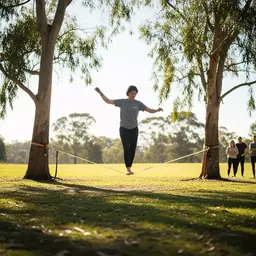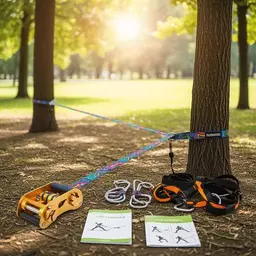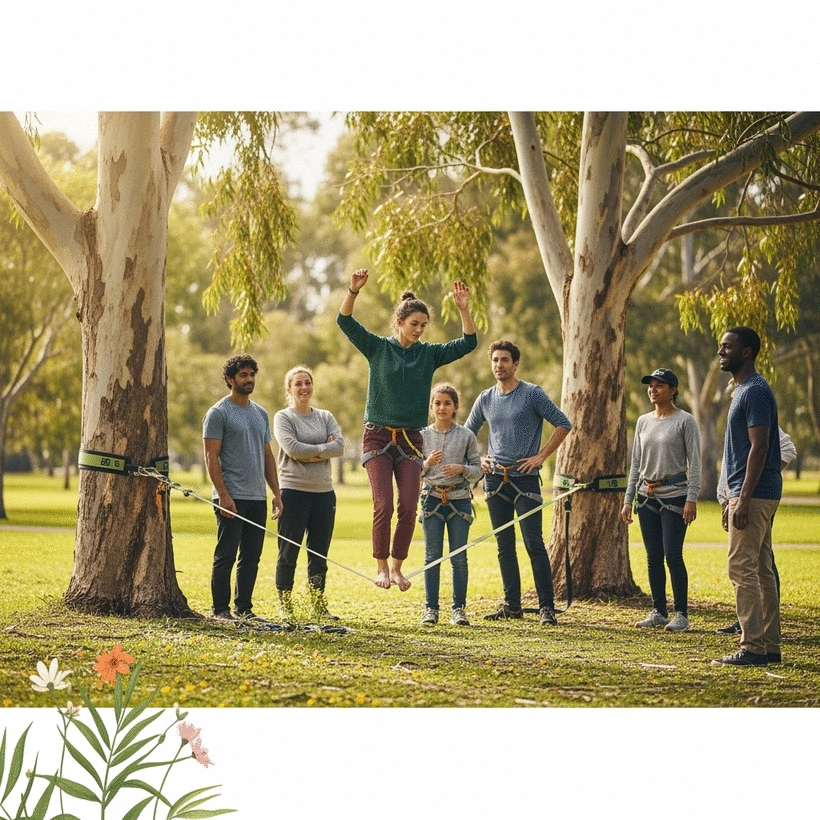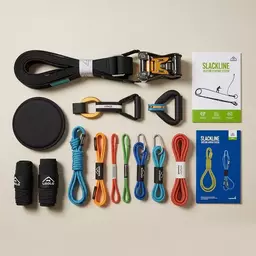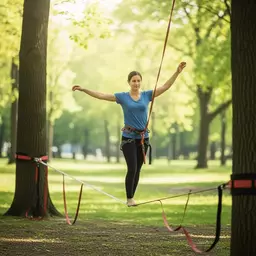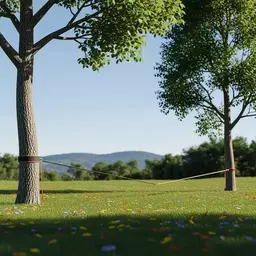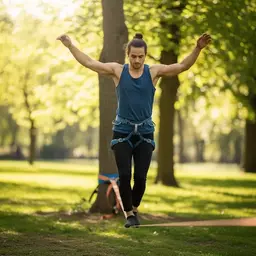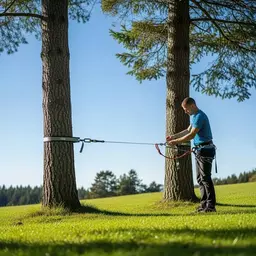Injury Prevention for Slackline Practice
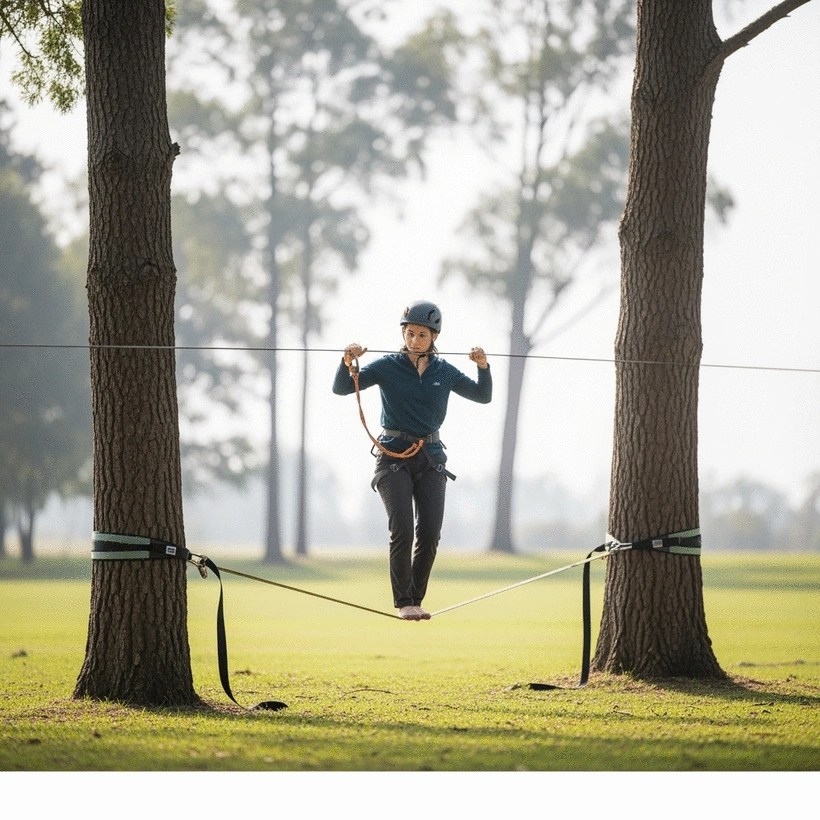
What if you could enjoy the thrill of slacklining while minimizing the risks? Understanding injury prevention is key to ensuring a safe and enjoyable experience on the line. Here are the crucial insights you'll gain from this article.
What You Will Learn
- Injury prevention is essential for maintaining health, enjoyment, and confidence while slacklining.
- Common injuries often result from falls, so assessing your environment and setup is crucial.
- Regular maintenance and high-quality equipment can significantly reduce the risk of serious injuries.
- Implementing safety protocols, protective gear, and progressive training enhances your slacklining experience.
- Continuous learning and community engagement are vital for improving safety practices in slacklining.
Key Strategies for Slackline Injury Prevention
Ensuring safety in slacklining involves understanding common risks and implementing preventative measures. The following visual highlights the key areas of focus for injury prevention.
Rigging Safety Protocols
Always back up your slackline equipment and perform essential checks before each session.
Protective Gear
Choose the right safety gear, such as helmets and pads, to minimize injury during practice.
Progressive Training
Engage in progressive skill training to build confidence and balance over time.
Fall Techniques
Learn safe landing techniques to reduce the likelihood of injuries during falls.
Understanding Slackline Injury Risks and Their Prevention
Slacklining is an exhilarating sport that combines balance, focus, and fun! However, just like any other outdoor activity, it comes with its share of injury risks. Understanding these risks and how to prevent them is crucial for ensuring a safe and enjoyable experience on the line. As a passionate slackliner and the owner of Slackline Shop Australia, I’ve seen firsthand how implementing safety measures can significantly reduce the likelihood of injuries.
Let’s delve into why injury prevention is not just important but essential for anyone looking to enjoy slacklining, regardless of their skill level!
The Importance of Injury Prevention in Slacklining
When it comes to slacklining, safety should always be your top priority! Practicing injury prevention can enhance your overall experience and keep you from sidelining your slackline journey. Here are a few reasons why it’s essential:
- Protect Your Health: Avoiding injuries allows you to continue practicing and improving your skills.
- Maintain Enjoyment: Knowing you’re safe boosts your confidence and enjoyment on the slackline.
- Encourage Others: Demonstrating safe practices encourages a culture of safety within the slacklining community.
By incorporating effective safety measures, you can enjoy the thrill of slacklining while minimizing the risks. Remember, a little caution goes a long way! For more detailed guidance, check out our slackline safety tips for beginners.
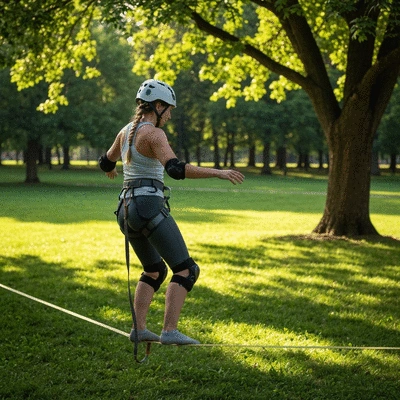
Common Slackline Injuries and Their Causes
Understanding the types of injuries that can occur while slacklining is vital in preventing them. While the sport is generally safe, here are some common injuries to be aware of:
Overview of Frequent Injuries: Cuts, Bruises, and Traumas
Injuries like cuts and bruises are often the result of falls or mishaps during practice. These minor injuries can happen when you’re just starting out or attempting new tricks. It’s crucial to pay attention to your surroundings and be mindful of potential hazards, such as sharp objects or uneven ground.
Always make it a habit to check your setup and ensure the area around you is clear. Trust me, it makes a huge difference in preventing those pesky bruises!
Understanding Ratchet Injuries and Equipment Failures
Another concern in the slacklining world is ratchet injuries, which can occur if equipment isn’t properly secured or maintained. Equipment failures can happen due to wear and tear or improper use, leading to falls and more serious injuries. That’s why I always stress the importance of using high-quality gear and performing regular maintenance checks.
At Slackline Shop Australia, we emphasize the need for reliable equipment. Investing in quality gear not only enhances your performance but also helps keep you safe while you explore the exciting world of slacklining! You can find a slackline gear guide for Australia on our site.
Risk Assessment: Identifying Potential Hazards in Slacklining
Conducting a thorough risk assessment before you hit the slackline can save you from potential injuries. Let’s explore what to look for:
Evaluating Slackline Setup and Environmental Factors
Take a moment to assess your slackline setup. Are the anchors secure? Is the ground soft and free of obstacles? Evaluating these factors can help you create a safer environment for practicing. Remember, a well-placed slackline can significantly reduce the chances of injury!
The Role of Equipment Quality in Safety
Your slackline setup should include high-quality equipment that meets safety standards. Look for lines that are designed for your skill level and the type of slacklining you plan to do. At Slackline Shop Australia, we provide product reviews to help you choose the right gear to keep you safe and enhance your experience on the line.
We Want to Hear From You!
What are your top tips for staying safe while slacklining? Share your thoughts below:
Summarizing Key Strategies for Injury Prevention
As we wrap up our discussion on slackline injury prevention, it’s crucial to remember that safety should always come first. By implementing advanced techniques and being proactive, we can significantly reduce the risk of injuries while enjoying this exhilarating sport. Let’s take a moment to recap the key strategies that everyone should keep in mind.
Recap of Advanced Techniques for Safe Slacklining
- Rigging Safety Protocols: Always back up your slackline equipment and perform essential checks before each session.
- Protective Gear: Choose the right safety gear, such as helmets and pads, to minimize injury during practice.
- Progressive Training: Engage in progressive skill training to build confidence and balance over time.
- Fall Techniques: Learn safe landing techniques to reduce the likelihood of injuries during falls.
These strategies not only enhance your personal safety but also contribute to a more enjoyable slacklining experience. Remember, taking the time to prepare and educate yourself can make all the difference!
The Importance of Continuous Learning and Adaptation
In the fast-paced world of slacklining, it’s vital to stay informed and adaptable. As we learn more about injury prevention and safety measures, our practices must evolve accordingly. This means regularly updating your knowledge through tutorials, community workshops, and firsthand experiences.
Engaging with fellow slackliners can provide invaluable insights and innovative techniques. Make it a habit to seek out new information and share your own journey with others. The more we learn, the safer and more skilled we become!
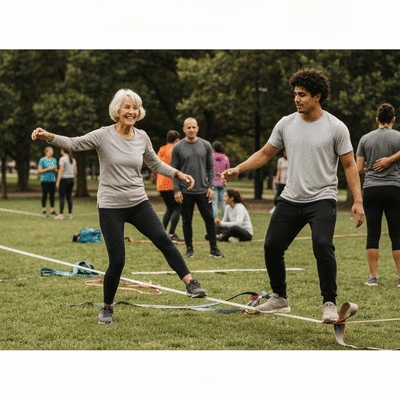
Encouraging Safe Slacklining Practices
Engaging with the Slackline Community for Shared Learning
One of the best parts of slacklining is the vibrant community that surrounds it! At Slackline Shop Australia, we encourage all slackliners to connect and share their experiences. Joining local groups or online forums can significantly enhance your skills, knowledge, and safety practices.
- Join Local Slacklining Groups: These are great places to meet enthusiasts and learn from experienced slackliners.
- Participate in Workshops: Community workshops are fantastic for hands-on learning and discovering new techniques.
- Share Your Experiences: Your journey can inspire others and foster a supportive environment for all skill levels.
By engaging with the community, you're not just improving your skills; you're also contributing to a safer slacklining environment for everyone! For more on getting started, see our slackline setup: a beginner's guide.
Inviting Readers to Share Their Experiences and Tips
I’d love to hear your stories! Sharing your experiences and tips not only enriches the community but also helps others learn from your journey. Whether you’ve faced challenges or celebrated victories, your insights can inspire fellow slackliners to stay safe and thrive.
At Slackline Shop Australia, we believe in the power of community, so don’t hesitate to reach out. Your experiences matter, and together we can create an even safer slacklining culture!
Understanding Injury Statistics and Reporting for Safer Practices
Lastly, understanding injury statistics is essential for improving safety practices in slacklining. By analyzing data on common injuries, we can identify areas for improvement in our training and equipment choices.
- Stay Informed: Familiarize yourself with the latest injury statistics related to slacklining.
- Report Incidents: If you experience an injury, reporting it helps the community learn and adapt.
- Advocate for Safety: Use your knowledge to promote safety initiatives within your local slacklining groups.
By embracing this information, we can make informed decisions that enhance our safety and overall slacklining experience. Let’s continue to support each other and strive for a culture of safety and growth in our community!
Frequently Asked Questions About Slackline Injury Prevention
Q1: Why is injury prevention crucial in slacklining?
A1: Injury prevention is crucial because it protects your health, allows you to continue practicing and improving, maintains your enjoyment and confidence, and encourages a culture of safety within the slacklining community.
Q2: What are some common slackline injuries?
A2: Common injuries include cuts, bruises, and other traumas from falls or mishaps, as well as ratchet injuries or more serious incidents due to equipment failure or improper setup.
Q3: How can I prevent ratchet injuries and equipment failures?
A3: To prevent these, always use high-quality equipment, perform regular maintenance checks, and ensure all gear is properly secured before each session. Backing up your slackline equipment is also essential.
Q4: What should I consider during a risk assessment before slacklining?
A4: A thorough risk assessment involves evaluating your slackline setup (secure anchors, proper tension) and environmental factors (soft landing, clear obstacles). The quality of your equipment also plays a significant role.
Q5: How can continuous learning and community engagement improve slackline safety?
A5: Continuous learning through tutorials and workshops helps you stay informed about the latest safety measures and techniques. Engaging with the slackline community allows for shared insights, innovative techniques, and a supportive environment for all skill levels, fostering safer practices.
Recap of Key Points
Here is a quick recap of the important points discussed in the article:
- Always prioritize safety by incorporating injury prevention strategies into your slacklining practice.
- Conduct thorough risk assessments to identify potential hazards in your slackline setup and environment.
- Invest in high-quality equipment and perform regular maintenance checks to minimize the risk of equipment failures and injuries.
- Engage with the slacklining community to share experiences, learn from others, and promote a culture of safety.
- Stay informed about injury statistics and advocate for safety initiatives within your local slacklining groups.
